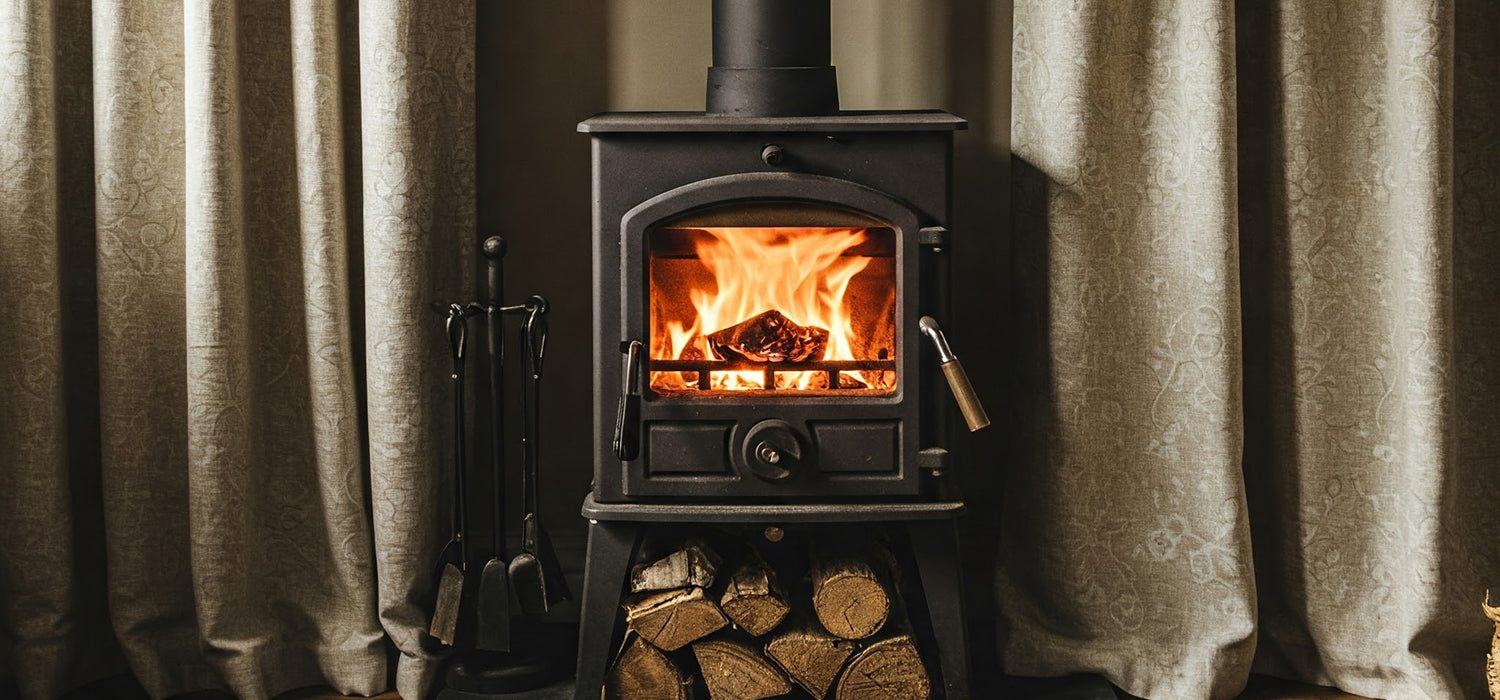
Keeping Your Baby Safe Around Log Burners
Bringing a baby home doesn’t mean giving up the cosy charm of log burners. Short answer: Yes, you can enjoy log burners safely with a baby—if you plan smartly. Keep reading for playful tips, clever barriers, and expert tricks to protect tiny toes while still basking in warmth.
Making Your Home Safe: A Guide to Log Burners and Babies
Nothing quite beats the warmth of a crackling log burner on a chilly evening. But as any parent knows, babies are curious little explorers, and a glowing stove can seem like the most fascinating toy.
The good news? With a few simple precautions, you can enjoy your fire without worry. Planning ahead and creating safe zones are your best allies. Think of it as building a mini “no-go” area for your little one, while keeping the room cosy for everyone.
The Main Dangers to a Child
Babies are naturally inquisitive. That tiny hand reaching for the shiny stove handle is both adorable and potentially dangerous. Knowing the main risks makes all the difference between a cosy evening and a trip to A&E.
The Risk of Burns
Log burners get seriously hot—over 260°C in some spots. Even a quick touch can cause painful burns. Babies can’t understand danger, and their skin is delicate. That’s why a robust fireguard isn’t optional; it’s essential.
Imagine your toddler crawling across the room, mesmerised by flickering flames. A fireguard creates a firm boundary, letting you enjoy the fire while they explore safely elsewhere.
The Risk of Carbon Monoxide
Carbon monoxide is the invisible threat lurking around poorly ventilated stoves. It’s odourless and colourless, but even small amounts can affect a baby’s sensitive lungs.
Installing CO alarms near the stove and in sleeping areas is a simple lifesaver. Test them regularly and keep the batteries fresh—think of them as your invisible safety net.
Your Child-Proofing Checklist
Childproofing a log burner takes more than a one-off tidy-up. It’s about layering protections and building routines that keep danger at bay.
Step 1: Install a Safety Fireplace Guard
A fireguard is your first line of defence. Fixed guards stay firmly in place, while freestanding options can be moved for cleaning.
Whichever you choose, make sure it covers the entire perimeter and has vertical bars close together. Check for gaps—babies are masters at finding loopholes. Tempered steel, reinforced aluminium, or fireproof mesh all offer strong protection.
Step 2: Install Carbon Monoxide Alarms
CO alarms are more than gadgets—they’re peace of mind. Place them near sleeping areas and the stove, and test them monthly. They won’t just protect your baby, they’ll protect the whole family.
A quick story: one parent told us that after installing CO alarms, they felt a wave of relief every time the fire roared. It’s subtle but powerful reassurance.
Step 3: Teach Children the Rules of the Hearth
Even tiny toddlers can start learning boundaries. Use visual cues like floor markings or colourful tape to show safe distances. For older children, simple explanations like “the fire is hot, don’t touch” can stick surprisingly well.
It’s worth reinforcing these rules consistently. Over time, your child begins to understand limits without feeling restricted—a balance every parent dreams of.
The Best Practices for Safe Use
Keeping your log burner safe is about combining smart tools with daily habits.
-
Keep babies at least 1.5–2 metres from the stove.
-
Clear the area of flammable toys, throws, and other temptations.
-
Supervise constantly—curiosity moves fast!
-
Regularly inspect your stove, guards, and ventilation.
-
Schedule annual professional checks and chimney sweeps.
Think of it like a mini safety routine: check, secure, and enjoy. Over time, these small habits become second nature, and your home stays warm and accident-free.
Decorative touches can also help. A fireguard doesn’t have to be an eyesore. Many designs blend seamlessly with living spaces, so safety and style go hand in hand.
Maintenance Tips
A safe log burner is a well-maintained log burner. Ashes, soot, and debris aren’t just messy—they’re potential hazards.
Clear ashes regularly, check seals and gaskets, and ensure proper ventilation. If you notice any loose or damaged guards, fix them immediately.
Professional inspections once a year keep hidden issues in check. Chimney sweeps every 12–18 months are equally important—they keep smoke flowing smoothly and minimise risks.
Emergency Procedures
Despite all precautions, accidents can happen. Knowing first aid makes all the difference.
For burns: run lukewarm water over the area for 10–15 minutes. Remove any clothing near the burn carefully, then cover with a clean, non-fluffy cloth or sterile dressing. Avoid butter, oils, or ice—they do more harm than good.
If smoke inhalation occurs, watch for persistent coughing, difficulty breathing, or unusual drowsiness. Keep emergency numbers close, including local services, poison control, and your GP. Quick, calm action can significantly reduce potential harm.
Conclusion
Babies and log burners can happily coexist—but only with careful planning and constant vigilance.
Safety is more than fireguards; it’s creating a safe zone, teaching boundaries, using alarms, and keeping equipment well maintained. Every home is different, so tailor your approach.
By layering protections and staying alert, you can enjoy the warmth of your log burners without worry. Your baby stays safe, the home stays cosy, and everyone gets to enjoy the flickering glow of a safe, welcoming fire.
Other content we think you'll love
- What Are the New Log Burner Rules in the UK?
- Why Your Log Burner is Smoking: Causes, Fixes, and Safety Tips
- Why Does My Log Burner Smell?
- Why Your Log Burner Is Burning Too Fast (And How to Fix It)
- Why Does My Log Burner Keep Smoking? Common Causes & Fixes
- Why Your Log Burner Won’t Stay Lit (and How to Fix It)
- Why Is My Log Burner Smoking? Causes, Fixes & Prevention
- Can You Safely Put a TV Above a Log Burner?
- Can You Safely Install a Log Burner Near Glass?
- Why Your Fireplace Smells Like Burning Plastic (and What to Do About It)
- Log Burner Carbon Monoxide: Stay Safe from the Silent Killer
- Log Burner Law UK: The Complete Guide for Homeowners

